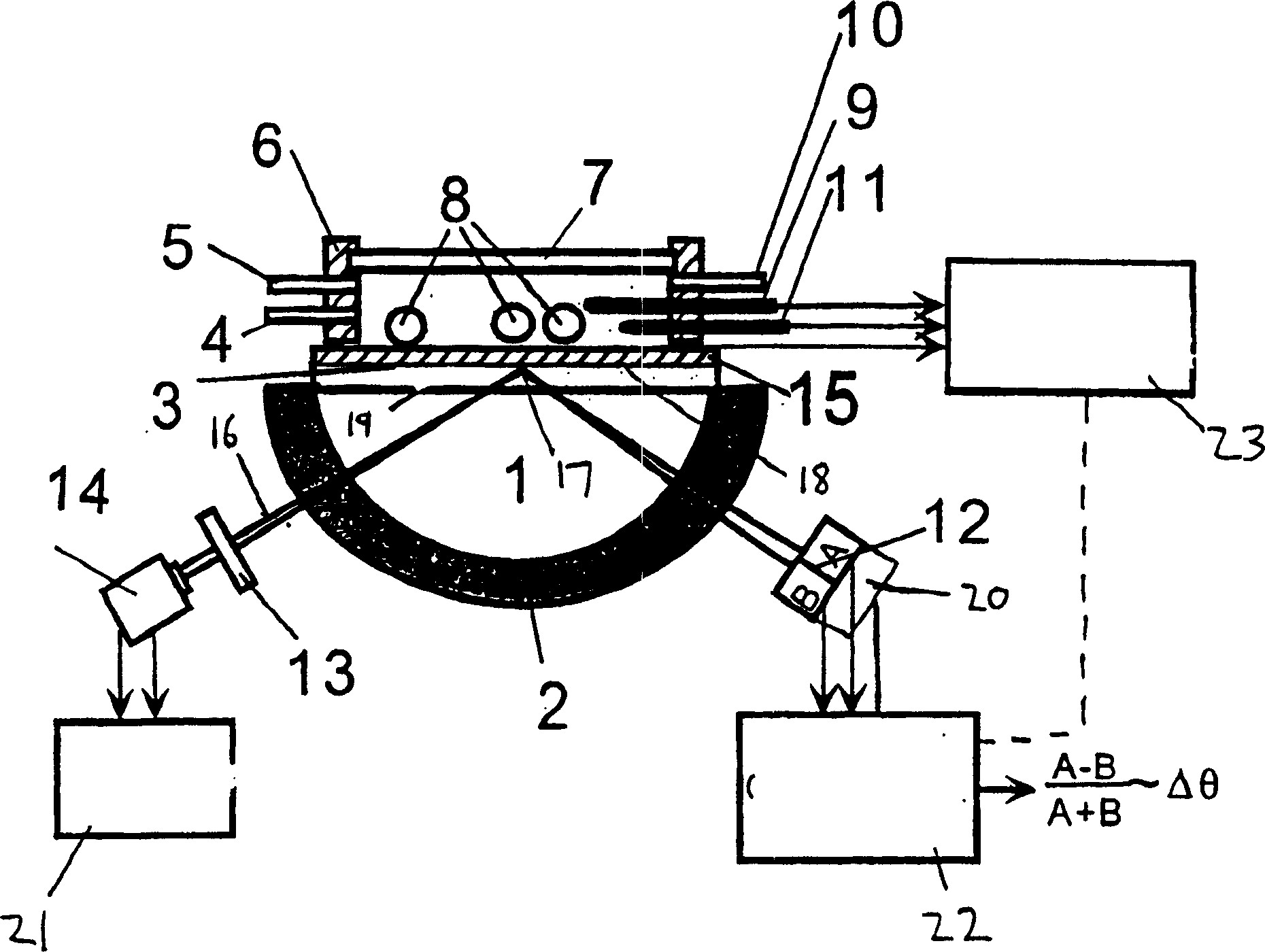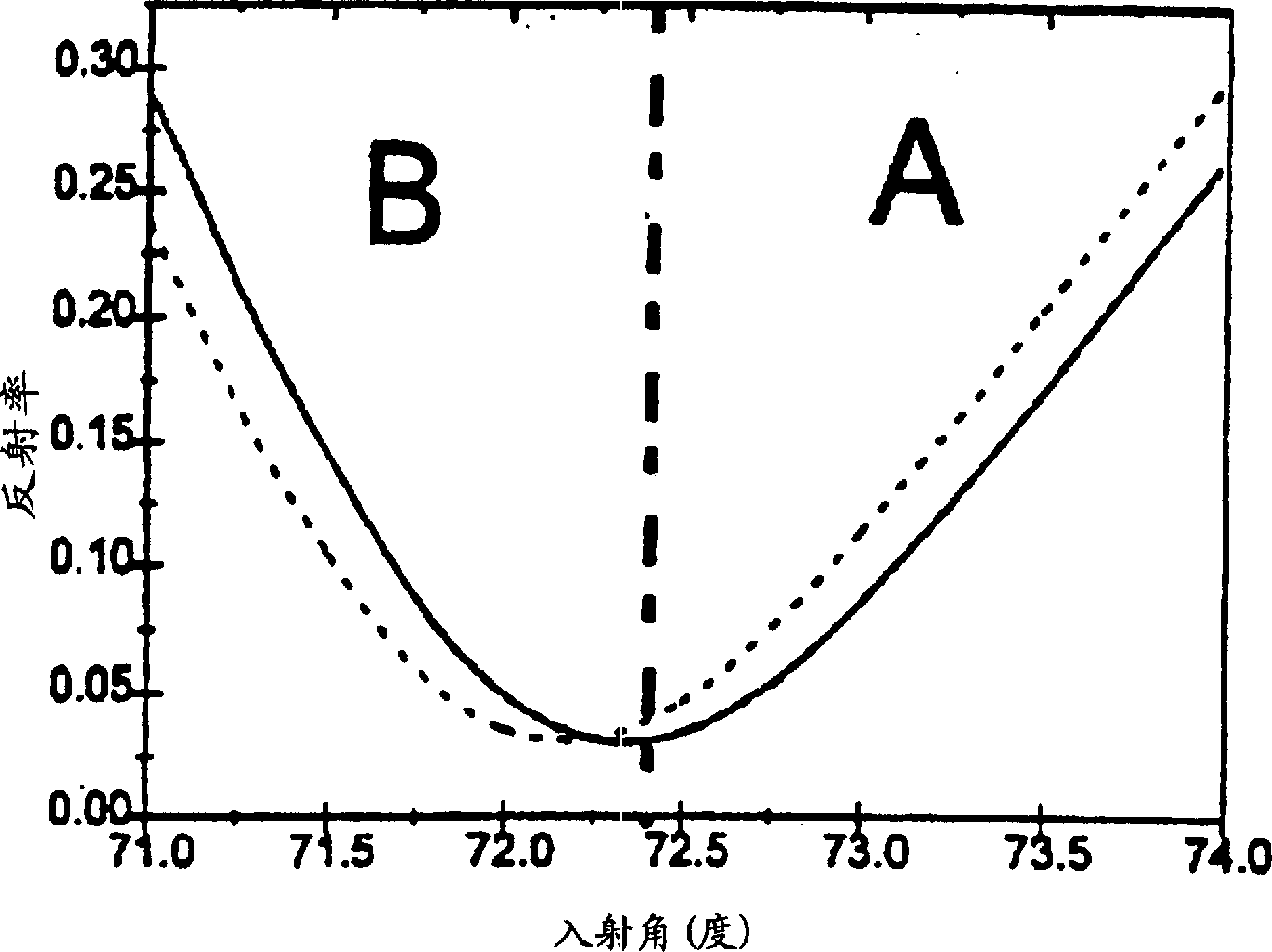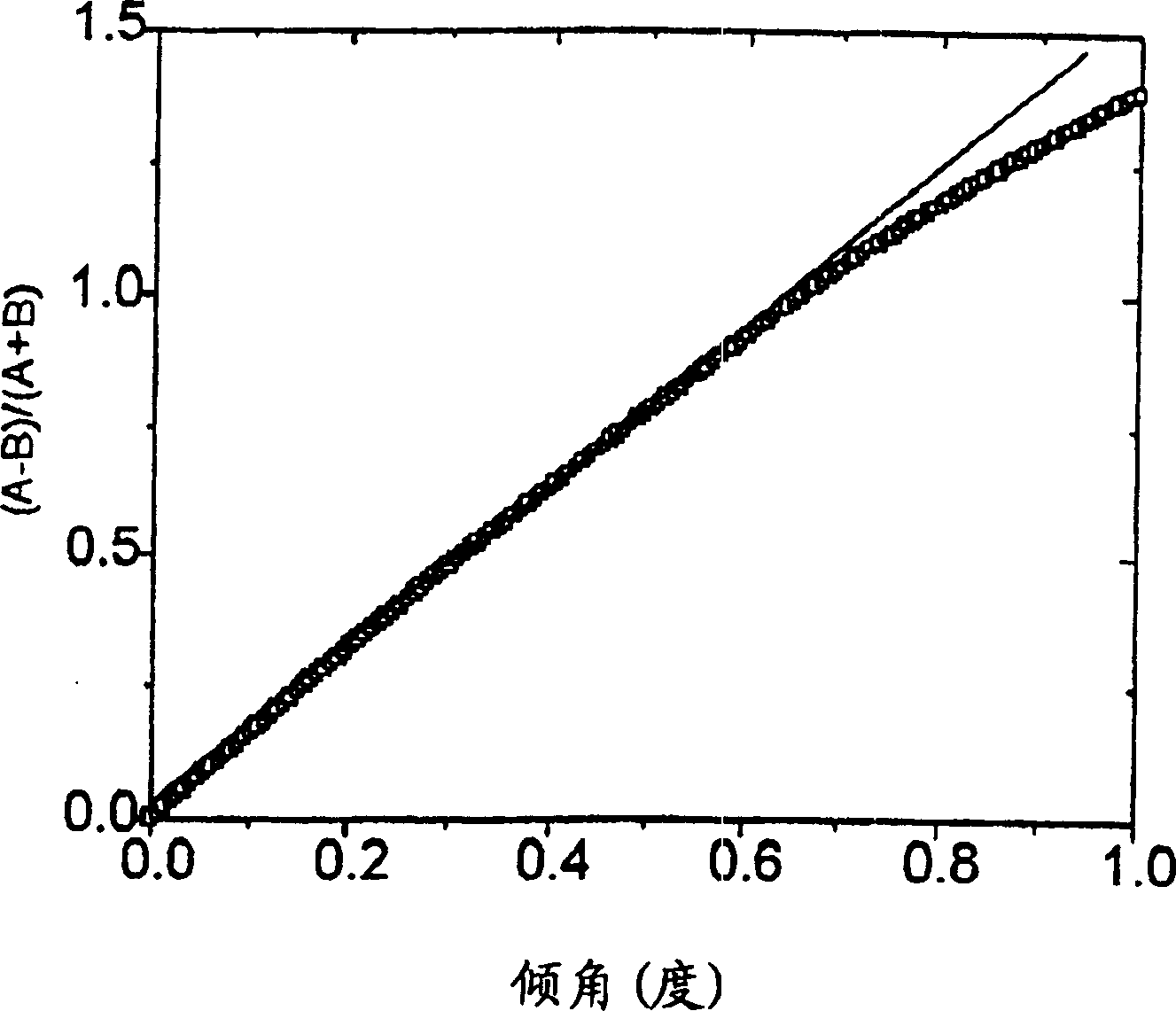Surface plasmon resonance detection with high angular resolution and fast response time
A surface plasmon and sensor technology, applied in instruments, measuring devices, scientific instruments, etc., can solve the problems of low response time, reduced response time, reliability depends on the accuracy of data points, etc.
- Summary
- Abstract
- Description
- Claims
- Application Information
AI Technical Summary
Problems solved by technology
Method used
Image
Examples
example 1
[0046] SPR device 1
[0047] In an SPR setup, a BK7 plano-cylindrical lens (Melles Griot) was used as the prism. A prism is closed, but not a perfect half cylinder. On the prisms, a 50-nm-thick gold film deposited on a BK7 glass slide in ultra-high vacuum has a coefficient matching that of the liquid. To reduce surface contamination, the gold films were heat-treated in a hydrogen flame before each experiment. A 5mW diode laser (l=635nm, Hitachi brand) is driven by a domestic laser controller. After calibration, a 14mm partial length (partial length) lens is used to focus on the gold film through a prism. Light reflected by the gold film was detected using a two-element photodiode detector (Hamamatsu Corporation, Model S2721-02) mounted on a precision translation stage. The photocurrents from the two cells (A and B) were converted into voltages using domestic circuits. The circuit also calculates the difference signal A-B and the sum signal A+B, and then sends these two sig...
example 2
[0050] SPR device 2
[0051] Another SPR setup used a BK7 plano-cylindrical lens (Melles Griot) as the prism. The BK7 glass sheet on the prism is coated with a 45nm thick silver or gold film using a vacuum coating machine, and its coefficient matches that of the liquid. White light from a 150W xenon lamp (oriel window) is sent to a monochromator. The monochromatic light with a bandwidth of 0.5nm emitted by the monochromator is calibrated and focused onto the silver film by a 14mm partial length lens through a prism. Light reflected by the silver film was detected using a two-element photodiode detector (Hamamatsu Corporation, Model S2721-02) mounted on a precision translation stage. The prism was rotated in each measurement such that a black line corresponding to the SPR inclination was positioned at the center of the laser beam. The reflected light falling on the two cells of the photodetector is then balanced by adjusting the position of the photodetector to A-B equal to ...
example 3
[0054] Effect of electron density on SPR
[0055] Figure 6 Shown is the SPR tilt position of a gold film (electrode) covered with a single layer of organic matter (thiopropionic acid or MPA) in 50mM phosphate buffer as the electrode voltage varies linearly from -0.2V to 0.3V (control Ag / AgCl). . The tilt position shifts by about 0.0008 degrees per 100mV, which is too small to be easily detected using conventional SPR devices. It is known that the electrode voltage can change the SPR dip position by changing the electron density in the metal film. The shift measured here is much smaller than for a bare gold electrode because the presence of MPA reduces the surface capacitance, and thus the electron density changes for a given change in voltage.
PUM
 Login to View More
Login to View More Abstract
Description
Claims
Application Information
 Login to View More
Login to View More - R&D
- Intellectual Property
- Life Sciences
- Materials
- Tech Scout
- Unparalleled Data Quality
- Higher Quality Content
- 60% Fewer Hallucinations
Browse by: Latest US Patents, China's latest patents, Technical Efficacy Thesaurus, Application Domain, Technology Topic, Popular Technical Reports.
© 2025 PatSnap. All rights reserved.Legal|Privacy policy|Modern Slavery Act Transparency Statement|Sitemap|About US| Contact US: help@patsnap.com



